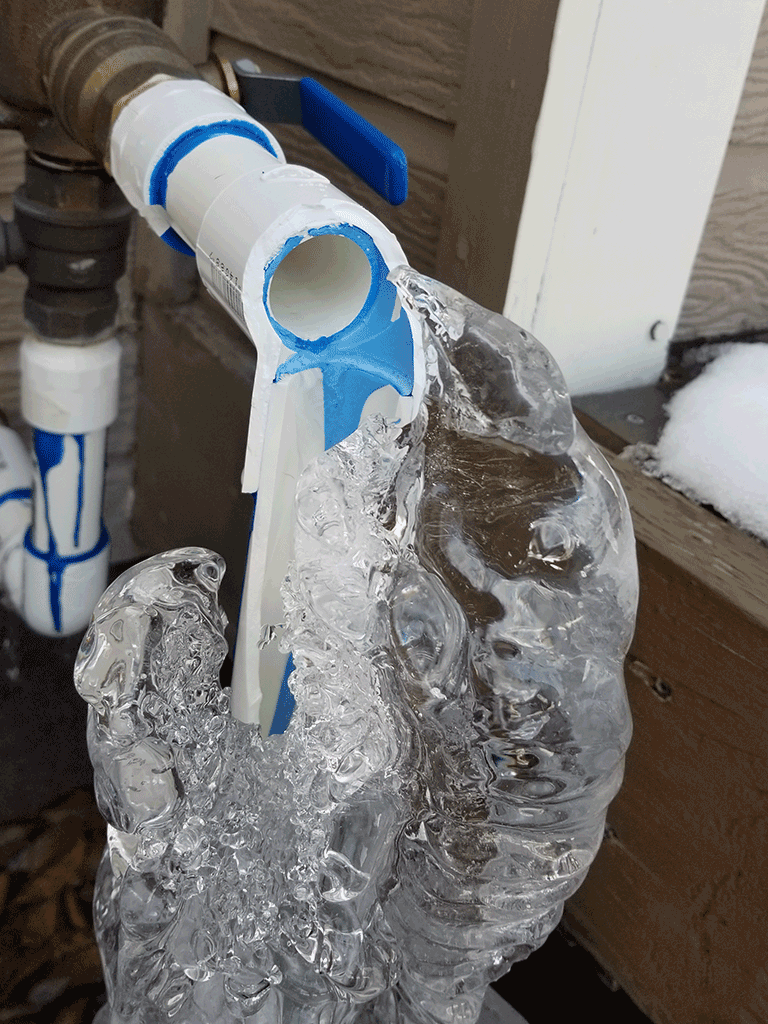Protecting Against Frozen Pipes in Cold Weather: Essential Tips
Protecting Against Frozen Pipes in Cold Weather: Essential Tips
Blog Article
We have stumbled on this post involving Helpful Tips to Prevent Frozen Pipes this Winter below on the net and accepted it made good sense to write about it with you on this site.

Cold weather can damage your plumbing, particularly by freezing pipelines. Right here's just how to prevent it from taking place and what to do if it does.
Introduction
As temperature levels drop, the danger of icy pipes increases, potentially leading to pricey repairs and water damage. Understanding how to stop frozen pipelines is essential for home owners in cold climates.
Avoidance Tips
Insulating prone pipes
Cover pipes in insulation sleeves or make use of warm tape to shield them from freezing temperatures. Focus on pipes in unheated or exterior locations of the home.
Home heating methods
Keep interior spaces properly heated, especially locations with plumbing. Open cupboard doors to permit warm air to flow around pipes under sinks.
Just how to determine frozen pipes
Look for decreased water circulation from faucets, uncommon smells or noises from pipes, and visible frost on subjected pipes.
Long-Term Solutions
Structural modifications
Take into consideration rerouting pipelines away from exterior walls or unheated locations. Add extra insulation to attics, cellars, and crawl spaces.
Upgrading insulation
Invest in top notch insulation for pipes, attic rooms, and wall surfaces. Proper insulation helps keep constant temperatures and minimizes the risk of frozen pipelines.
Protecting Outside Pipes
Garden tubes and outside taps
Separate and drain yard hose pipes before winter months. Set up frost-proof faucets or cover outside faucets with insulated caps.
Comprehending Icy Pipelines
What causes pipelines to freeze?
Pipelines freeze when subjected to temperatures listed below 32 ° F (0 ° C) for expanded durations. As water inside the pipelines ices up, it increases, putting pressure on the pipe walls and potentially causing them to rupture.
Risks and problems
Icy pipes can cause water system interruptions, building damage, and pricey repairs. Ruptured pipelines can flooding homes and cause comprehensive architectural damages.
Signs of Frozen Pipes
Identifying icy pipelines early can avoid them from bursting.
What to Do If Your Pipelines Freeze
Immediate activities to take
If you believe frozen pipelines, maintain taps open to soothe stress as the ice thaws. Utilize a hairdryer or towels taken in warm water to thaw pipelines slowly.
Final thought
Avoiding icy pipes calls for positive procedures and quick feedbacks. By understanding the causes, signs, and safety nets, house owners can protect their pipes throughout cold weather.
6 Proven Ways to Prevent Frozen Pipes and Protect Your Home
Disconnect and Drain Garden Hoses
Before winter arrives, start by disconnecting your garden hoses and draining any remaining water. Close the shut-off valves that supply outdoor hose bibs and leave the outdoor faucet open to allow any residual water to drain. For extra protection, consider using faucet covers throughout the colder months. It’s also important to drain water from any sprinkler supply lines following the manufacturer’s directions.
Insulate Exposed Pipes
Insulating your pipes is an effective way to prevent freezing. Pipe insulation is readily available at home improvement stores and is relatively inexpensive. Pay close attention to pipes in unheated areas such as the attic, basement, crawl spaces, or garage. Apply foam insulation generously to create a buffer against the cold. You can also wrap your pipes in heat tape or thermostat-controlled heat cables for added warmth.
Seal Air Leaks
Inspect your home for any cracks or openings that could let in cold air. Seal any holes around the piping in interior or exterior walls, as well as the sill plates where your home rests on its foundation. Additionally, make sure to keep your garage door closed unless you’re entering or exiting. Leaving it open creates a significant air leak that can lead to frozen pipes.
Allow Warm Air Circulation
During cold snaps, it’s essential to allow warm air to circulate evenly throughout your home. Leave interior doors ajar to promote better airflow. Open kitchen and bathroom cabinets to help distribute heat consistently around the rooms. If you have small children or pets, be sure to remove any household chemicals or potentially harmful cleaners from open cabinets for safety.
Let Faucets Drip
A small trickle of water can make a big difference in preventing ice formation inside your pipes. When temperatures drop significantly, start a drip of water from all faucets served by exposed pipes. This continuous flow helps prevent the water from freezing. Additionally, running a few faucets slightly can relieve pressure inside the pipes, reducing the chances of a rupture if the water inside does freeze.
https://choateshvac.com/6-proven-ways-to-prevent-frozen-pipes-and-protect-your-home/

I'm certainly very drawn to Helpful Tips to Prevent Frozen Pipes this Winter and I hope you liked the post. Sharing is caring. You never know, you could be helping someone out. Thanks for going through it.
This Site Report this page